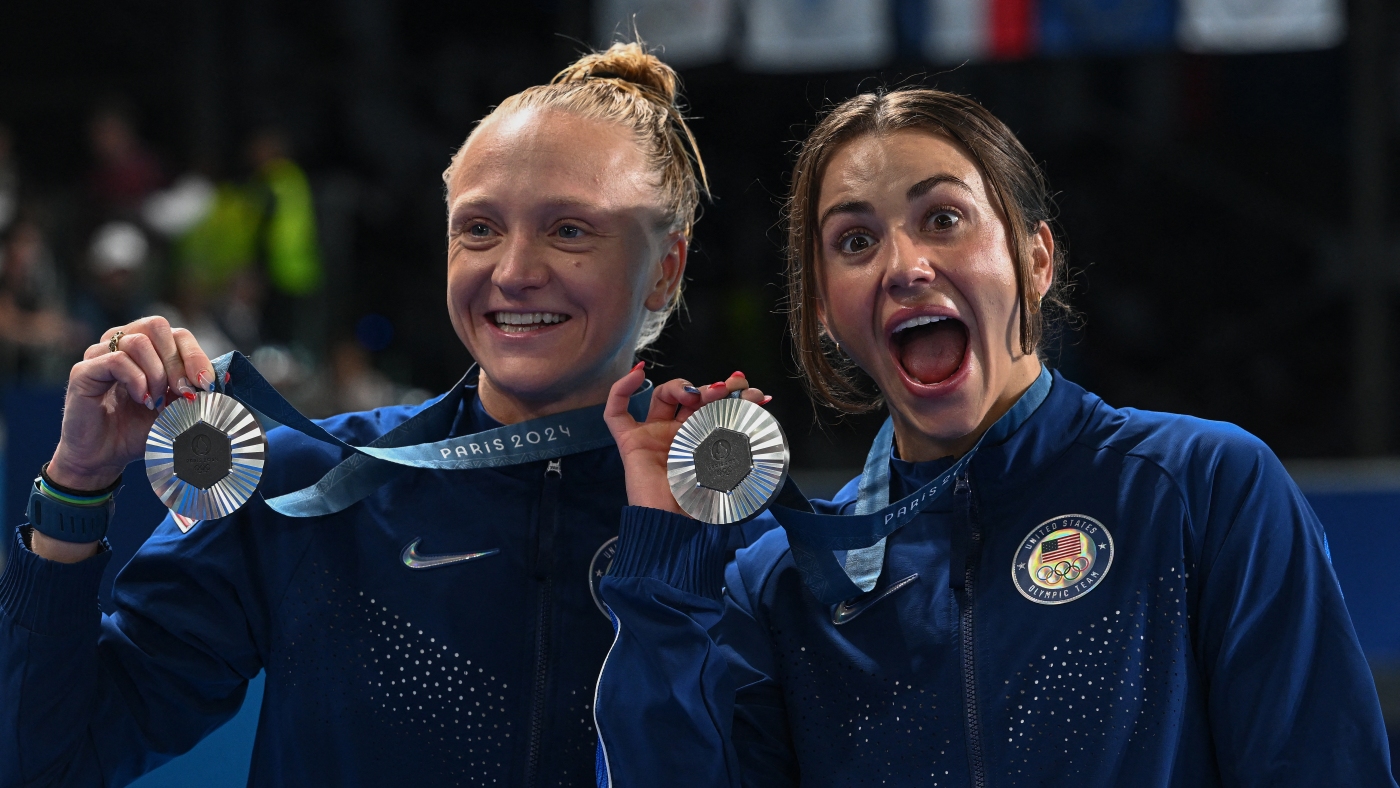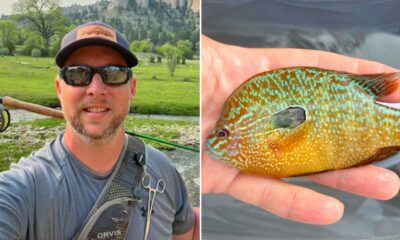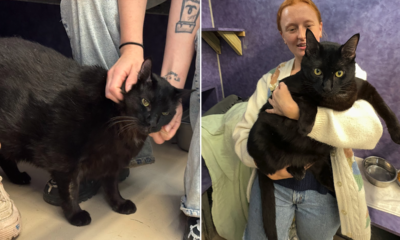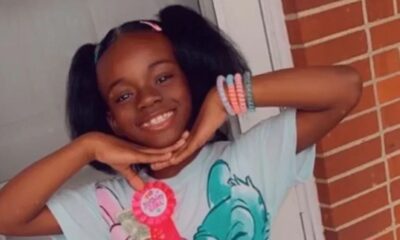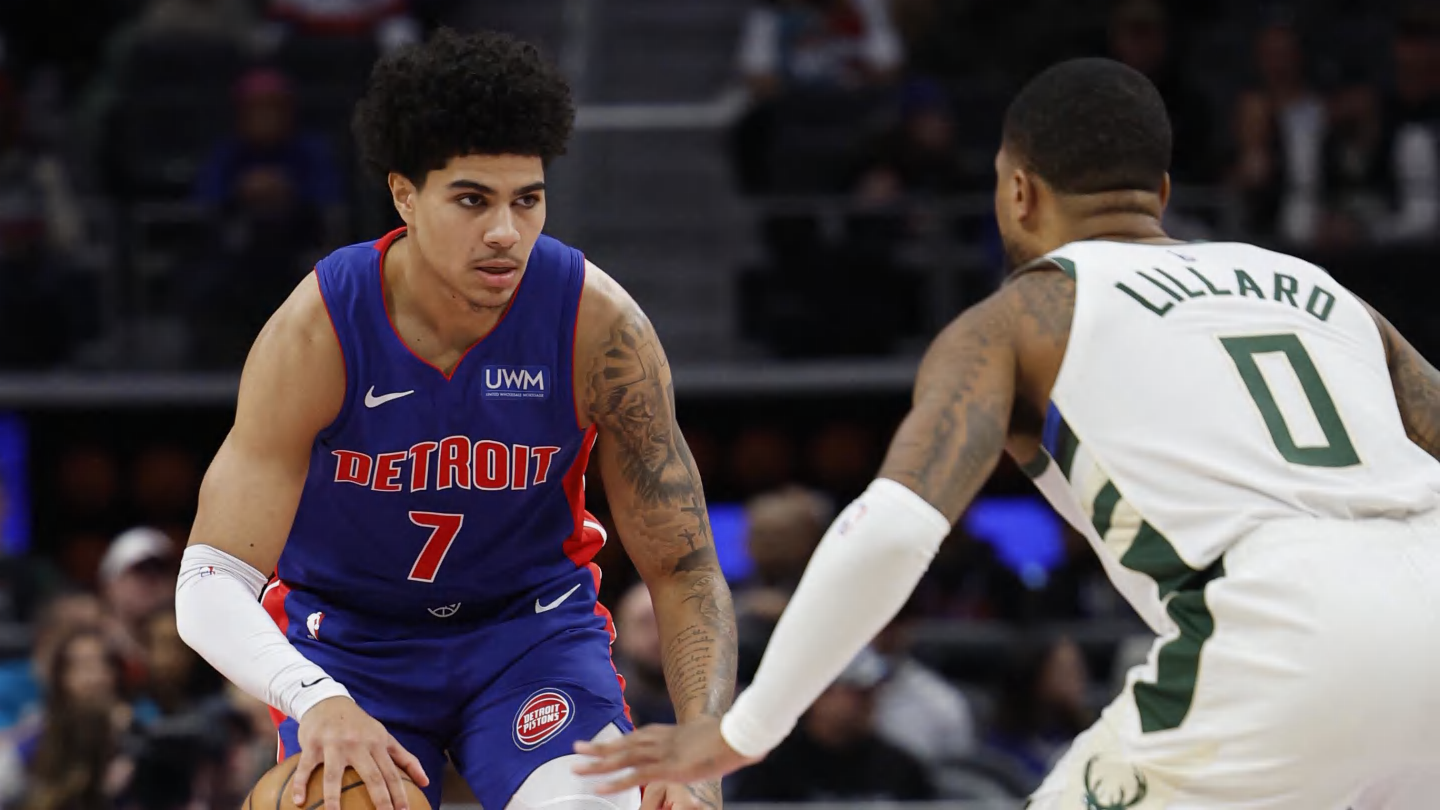Sports
Elliott: Teenager Josephine Lee announces her presence on figure skating's big stage

Josephine Lee’s figure skating talent is obvious to even the most casual observer.
The sureness of her jumps, her ability to captivate an audience and the exquisite quality of her edges — the technique that puts the “figure” in figure skating — make her an entrancing athlete. Lee, who turned 16 on Feb. 3, confirmed her 2026 Olympic ambitions by performing the highest-scored long program at the recent U.S. championships, a stunning routine that lifted her to an unexpected but deserved second-place finish behind Amber Glenn and ahead of defending champion Isabeau Levito.
Yet Lee, who lives in Irvine and trains at Lakewood Ice, has another talent that isn’t as obvious: She can solve a Rubik’s cube with her feet.
She played a video of her feet feat for The Times but was too modest to share it. Suffice to say that if finishing a Rubik’s cube with your feet ever becomes an Olympic sport, she’d contend for a gold medal.
She had solved it with her hands, but she didn’t stop there. “One time I was on a long car ride and I got really bored, so I decided to put the Rubik’s cube on the floor. It took about an hour,” she said. “It’s a really good ankle exercise.”
It’s not a conventional training method, but it’s working for her.
Lee is too young to compete in this year’s world championships at the senior level but will go to the world junior competition later this month in Taiwan in hopes of improving on her 19th-place finish a year ago. She’s trying to stay in the moment while positioning herself to earn a berth on the U.S. team at the 2026 Milan-Cortina Games, a tough balance to maintain.
She has the talent and the temperament. She was 4 when her father, Jeff, a computer programmer, took her to a rink near his office. She was, she joked, the only person ever to fail a Tot 1 learn-to-skate class. But even then, she recognized the challenges and sense of accomplishment the sport offered. That determination carried her through a stress fracture in her back when she was 11, and it fuels her efforts to conquer those jumps and spins on the way to living her Olympic dreams.
“I think she’s got a good shot. I think her work ethic and her desire to get there is more than anyone I see out there,” said her coach, Amy Evidente of Los Feliz.
“The good thing about her is you tell her to work on something or you work on something with her and it’s better the next day. She’s really taking everything in and trying to take the instruction or correction or whatever it is that she’s told. She will make sure that it’s done. And so I think she’s got as good of a chance as Amber and Isabeau and Lindsay Thorngren, whoever else is one of the top athletes.”
Josephine Lee competes during the women’s free skate at the U.S. figure skating championships on Jan. 26.
(Sue Ogrocki / Associated Press)
Lee didn’t expect much from herself at the U.S. championships because she felt she hadn’t lived up to her potential this season. She was first after the short program at the Cranberry Cup junior event but dropped to third overall, and she finished eighth at a Grand Prix junior event in Linz, Austria. She did win the Pacific Coast sectional title.
Part of the problem was she had grown to about 5-foot-4 over the last year and wasn’t comfortable in her developing body. “It’s been a little struggle adjusting to that,” she said, “but I think my skating matured.”
Evidente was nervous for Lee before the U.S. competition.
“Only because she worked so hard and I just wanted her to put out two programs that she could walk away with that she could say, ‘I’m very proud that I did that,’” Evidente said. “My expectation was just for her to go and enjoy herself and kind of learn about herself through this process.”
Lee stood fifth after the short program. That was a moral victory because a costly mistake on an element in the short program a year ago had left her in 11th place, giving her a steep climb to her eventual fifth-place finish. This time, she pulled off a triple flip-triple toe loop jump combination and sailed through.
She was within reach of a medal. Suddenly, her expectations rose. “Then I was, ‘Shoot, I’ve never been in this position before,’” she said.
She handled the pressure beautifully, enjoying her performance instead of ticking off each technical element in her mind like a shopping list. She completed seven triple jumps without a single negative grade of execution from any of the nine judges; though she did a triple flip-double axel-double axel sequence instead of a triple-triple combination, she racked up 138.85 points, a personal best and three points better than Glenn’s free skate routine. Her final total score was 204.13 points.
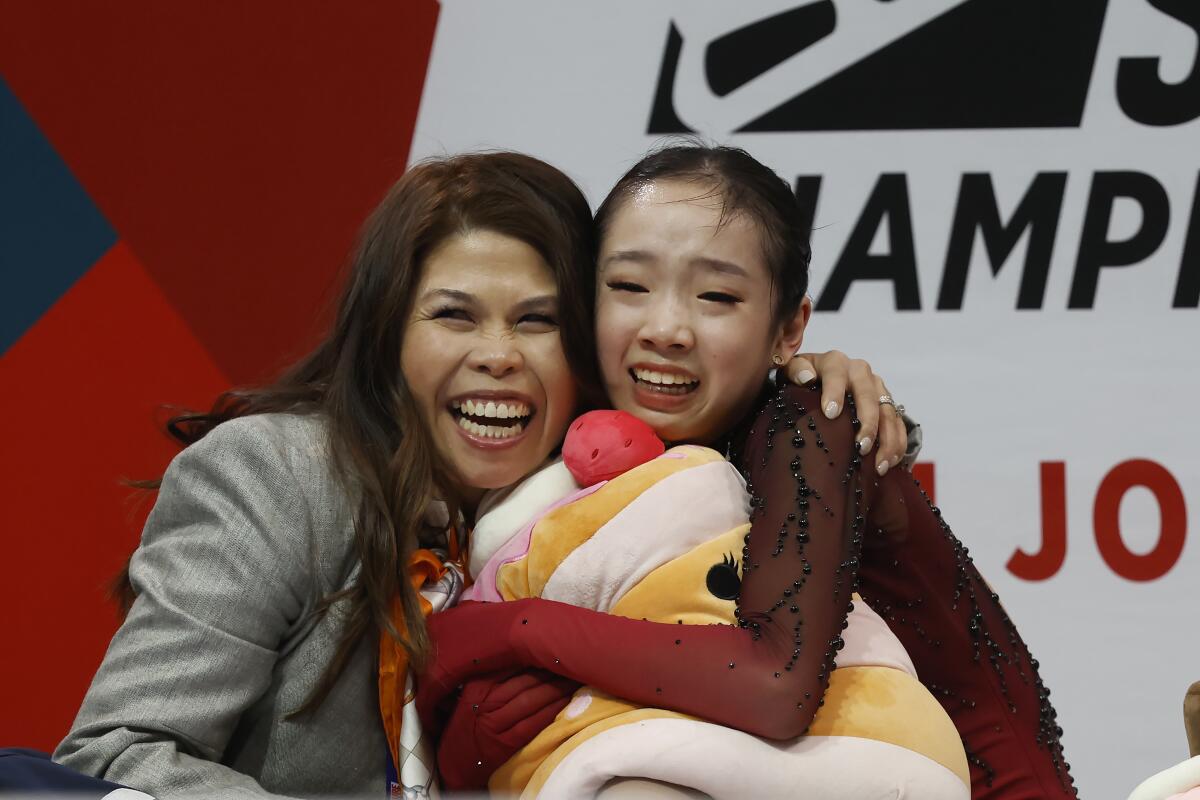
Josephine Lee, right, hugs her coach, Amy Evidente, after learning her free skate score at the U.S. figure skating championships.
(Josie Lepe / Associated Press)
Her only misstep occurred when, overwhelmed by the occasion, she tried to exit the ice through the Zamboni door instead of the skaters’ door.
“You go through a program and you watch a girl like that and you just go, ‘OK girl, you can do this,’” Evidente said. “‘Just six more jumps. OK, you can continue doing this. You can stay up. Just keep going.’”
They were both happily shocked by her score, but four skaters remained. Lee and Evidente didn’t know if her total would hold up as No. 1 for the long program and they didn’t know where she’d finish.
Lee didn’t see the final skaters or track the standings. “My eyelashes fell off and I was reapplying those. They fell off when I was crying in the kiss-and-cry. So I didn’t really watch Amber’s entire skate,” Lee said.
“But my friends were texting me, like, ‘Oh my God, you’re going to place.’ I think I was getting interviewed in the mixed zone during Isabeau’s skate so I didn’t get to watch her. But I had no idea that I had won the free skate until afterward. Way after.”
Glenn and Levito are headed to the world championships, but Lee said she’s not disappointed to return to junior worlds. Her mother, attorney Caroline Tseng, is from Taiwan, so Lee welcomes the chance to visit. Since she didn’t expect to do well enough at the U.S. championships to be chosen for the junior world team, the chance to gain additional high-level international experience is a bonus. “I’m definitely really grateful for the opportunity,” she said.
She will face high expectations. Evidente, who began coaching her late in 2020, believes she’s better prepared than she was a year ago.
“I think with experience you just know so much more. And she knows how to handle herself so much more. So I think she will be able to thrive in that environment this year,” Evidente said. “The only expectation for me for her, as I told her [recently], is to stay loyal to her hard work. And to stay really present, because I think everything else comes from that.”

Sports
Leny Yoro, from Paris boy to Man Utd: 'He had the same speed as Kylian Mbappe'

There are always Sliding Doors moments in a player’s career; points when a lifetime’s path takes a critical turn, based on what feels like a coin toss.
In Leny Yoro’s case, it happened in the form of a red card.
On October 20, 2021, Baptiste Rolland’s dismissal for Lille Under-19s against their Sevilla counterparts in the UEFA Youth League transformed Yoro’s trajectory. Centre-back Rolland was dismissed in the 79th minute for pulling the shirt of Diego Rodriguez. Yoro, just 15 years old and previously a striker and then midfielder, came on to play in defence for the final few minutes, his first appearance for the French club’s under-19s side. The sending-off and Rolland’s subsequent suspension meant Yoro would start the team’s next Youth League fixture, the return at home against Sevilla.
It was the last time Olivier Szkwarok, who was in charge of Lille Under-16s at the time, would coach him.
“When Leny was an under-16, I said to the under-19 coach that he needs to play in the under-19s, but he didn’t have a place for him,” Szkwarok, now working as a youth coach at Toulouse, another French club, tells The Athletic. “But the first time he (started for the under-19s), he never returned with me. He was the best on the pitch.
“On that day, Liverpool and Monaco saw a lot of potential in him. After that, he was with the under-23s, and it was easy for him. Lille needed him to sign a professional contract and they invited him into the first team. Jocelyn Gourvennec, the first-team coach, loved his potential and said he could train with professionals full-time.
“I was a little surprised, but not surprised. Leny is a competitor and a hard worker.”
Yoro had joined Lille in 2017 from local side Villeneuve-d’Ascq. He initially grew up in Saint-Maurice, a suburb of Paris, 137 miles (222km) to the south, where he played his football in a playground opposite his home. Then he played for Alfortville, in the south-east of the French capital. His three brothers — Esteban (14), Eden (12) and Romeo (10) — all play football too; his father, Alain Yoro, had been in Lille’s academy himself as a teenager.
When Yoro was young, his parents split up and his mother, Flore Baugnies, moved the family to Bormes-les-Mimosas on France’s south coast for six months, before then going to Lille, in the north of the country near the border with Belgium, to be closer to family. That was when Yoro joined Villeneuve d’Ascq, known locally as VAM.
United’s Yoro battles with Rangers’ John Souttar last week (Ian MacNicol/Getty Images)
“The club is located in a working-class neighbourhood,” recalls Aboubacar Sankhare, the former Lens, Toulouse and Dusseldorf defender. “At the time Leny was there, I was the club’s general manager. He stayed at the club with his brothers for two-and-a-half to three years.
“From a very young age, he had this ability to adapt quickly, and he had this maturity. He understood instructions very quickly. He already had intrinsic qualities of his own. He played with the team of his age and a higher category (age group). He had his siblings, and his mother came to see them every day at the stadium. It was a social club.”
VAM fell into financial difficulties and no longer exist. At the time, though, Sankhare was leading the club’s social and educational projects, in addition to training youth sides with a view to some of those kids reaching the first team. In addition to Yoro and his brothers, Sankhare’s sons, Yssouf and Zakary, also joined professional clubs after playing at VAM.
Yoro stood out. But not in the position you would expect.
“He was a striker with us, and could play in all positions because he could adapt extremely quickly,” recalls Sankhare. “The Lille scouts came several times and reported on him. At the time, there were the biggest clubs in the region — Lens, Lille, Valenciennes, Dunkirk, Boulogne — who came to scout. He became a defender at Lille.”
When he went to Lille for a trial, Yoro impressed immediately. That was when Szkwarok, who coached the under-13s and then the under-16s at the club, first saw him play. “I loved him from the trial,” he recalls. “He was a different player. When he was 12, he was the same as now. For a tall player, he had good technique. But he was missing the speed. He had a good personality. Like today, he was a leader who always encouraged his team-mates.”
The years Szkwarok worked with Yoro bookmarked a critical period in his development. Yoro initially played in midfield, before switching positions. “He was a defender full-time from under-15,” says Szkwarok. “He had a very good technical level and a very good in-game intelligence. He can see and play quickly, with his left or right foot, and I think, at professional level, he can play in midfield if a coach needed him to. A little bit like John Stones at Manchester City. In my opinion, Leny has a better potential than John Stones.”
But not everything was straightforward.
“All of the coaches loved him for his personality but not all of them believed in him,” says Szkwarok. “In the under-14s, it was a little bit complicated. A coach said in a meeting that Leny does not have the potential to play at the highest level. For me, it was a big error to say that about Leny. Because he was a tall player, and we needed to give him a little bit of time to grow up, and after he can show his potential.”
Yoro had a growth spurt before the age of 16. Speaking to French newspaper La Voix du Nord, mum Flore recalled how “he gained 10 centimetres (almost four inches)” during his under-16 year but “all year long, he was injured”. “He injured himself, without taking any hits during matches,” she said. Yoro had to adapt to his changing body and Lille tailored their coaching to deal with his small, repetitive muscular issues.

Yoro going up against Kylian Mbappe in Ligue 1 last year (Franck Fife/AFP/Getty Images)
“Leny was always the tallest but he grew and it (led to) small injuries,” says Szkwarok. “He had them often. Two days (out of action), three days, four days. We found a solution and after we changed our method of training with him, he could train all day and played all the games.
“When he was an under-16, at the beginning of the season, we went to a small tournament. He hadn’t played during the season so in his first game, to protect him, I put Leny in midfield. Against (Belgium’s Club) Bruges and PSV (Eindhoven, from the Netherlands), he played very well. In defence you have to make more runs in behind, longer runs, and in midfield they are shorter.
“In order to adapt to his new body, he worked a lot. That’s why he’s always a good player technically and this part of his character is a very good example for his career in football.”
Yoro became one of the quickest and strongest in the group. But those years without exceptional pace had honed his ability to read the game too. It is a key trait, normally confined to experienced players, and it is something scouts picked up on when assessing him.

GO DEEPER
Leny Yoro to Manchester United: The Athletic 500 transfer ratings
“When he played against (France captain and now Real Madrid forward) Kylian Mbappe, he had the same speed as him,” says Szkwarok. “But when he was younger, Leny did not have a lot of speed and he developed the ability to read the game, both defensively and offensively. It is his best quality. A very intelligent player.
“He had the mentality of a defender. He loved defending, he loved intercepting the ball, winning the ball with his head. It is a little bit rare to have both qualities, to have technique and the mentality of a defender.”
Then came those under-19s matches against Sevilla in late 2021, under coach Stephane Pichot, and Yoro’s progress went up several gears. “It all started from there, because he played two more Youth League matches afterwards,” his mother said. “That’s where his No 15 comes from (which Yoro will now also wear at Manchester United). Because it all started when he was 15 years old.”
In October 2021, Yoro played with Lille Under-19s for the first time. By the following May, then aged 16, he had made his debut for their first team — coming off the bench away at Nice. In the process, he became the club’s youngest player since Joel Henry in 1978, surpassing Eden Hazard. He was invited to stay with the first team under new manager Paulo Fonseca in summer 2022 and, after just two days of pre-season training, the Portuguese coach had made up his mind.

Yoro holding back Aston Villa’s Ollie Watkins in the Europa Conference League last season (Justin Tallis/AFP/Getty Images)
“In all my years as a coach, I’ve never seen such a young player with so much maturity,” Fonseca told The Athletic last year. “He has so much class. So much elegance. He’s a beautiful player.” In the September, he became Lille’s youngest starter since Oumar Dieng in 1989.
“When we started to work with Leny, we saw a lot of potential,” Tiago Leal, Fonseca’s assistant, tells The Athletic. “We didn’t care about his age. We care about his skills. Technically, tactically, mentally, personality, character… he had many things that for his age were not normal.”
Taking the step into the professional game is never plain sailing, though. His full debut against Toulouse, a 2-1 Lille win, was a case in point. He won four of five aerial duels but also made an error that led to the Toulouse goal — a loose pass. He needed time, and the right environment, to adjust.
Under Fonseca, he would get that. Now in charge at AC Milan, Fonseca is no stranger to bringing through young talent, doing so with Diogo Jota (now of Liverpool and Portugal) at Pacos de Ferreira and then Mykhailo Mudryk (Chelsea and Ukraine) at Shakhtar Donetsk.
“In the first season, he made many mistakes that cost us many games, but for us, it was not a problem at all,” says Leal. “We knew it was part of the process with younger players. He was brave, because he never stopped trying to do what we demanded of him. We made a bet on him and as a team we were ready to pay the costs of this bet.”
Yoro’s first season of senior football was a learning curve. He made eight league starts and 15 appearances for Lille’s first team. How he responded to those inevitable rookie errors set him apart. “He’s really mature, his composure is not normal at his age,” says Leal. “That’s what impressed us. It wasn’t just because of his physical or technical qualities. It was the package. He was different from most of the others at his age.
“When he made mistakes, what I felt is that he was always stable, and that says a lot about his personality. He was always focused on his work, always trying to improve every day, not dependent on winning, losing, making a goal or not. He was always stable. That’s why he has this level of attention with Real Madrid, Paris Saint-Germain, clubs like that spotting him. Because it is special at his age.”
𝑻𝒉𝒆𝒏 & 𝒏𝒐𝒘 😍
Leny Yoro et nos diplômés 2023 ont reçu leur BAC lundi au Domaine de Luchin 🎓@leny_yoro ❤️ pic.twitter.com/ZjaMixgnX4
— LOSC (@losclive) April 24, 2024
Under Fonseca, Lille played an expansive brand of football, the coach demanding that his team press high up the field, take risks in possession and sometimes leave their defenders exposed with half a pitch of space in-behind. “Leny showed from the very beginning that he wanted to learn, to improve, and this is an important aspect of his character,” says Leal. “He is humble. When you have the skills technically, and when you are physically blessed — he’s really tall, fast, explosive — you need the desire to be better and courage to play the game we demand. He showed that from the beginning.”
His second season, 2023-24, bore fruit. Yoro started 30 league matches and featured in 44 games in all competitions. He succeeded the experienced Jose Fonte in Lille’s starting lineup, who had been a “role model” for him within the group according to Leal, along with the new captain Benjamin Andre. “He needed the mix of many things to help the flower grow,” says Leal. “We didn’t create the flower, we just gave it water, nutrients — the others and us are the gardeners.
“In the second season, he became the player we expected. He became more confident in himself, started to build this ego that you need, because he was ready to take his place in the team. He became almost complete. And we are speaking about a kid. I don’t have any doubts, about Leny. He’s getting what he deserves.”
His form earned him a place in the Ligue 1 team of the season, and elevated his status to one of the most exciting centre-backs in Europe. It was enough to persuade Manchester United to spend £52million ($65m; €62m), potentially rising to £59m, and fight off serious competition, making Yoro the most expensive player ever aged 18 or younger. (Mbappe was signed initially on a season’s loan by PSG before his €180m transfer from Monaco at age 19.)
Throughout his career, Yoro has quickly adapted to every challenge. United, English football and the Premier League will be a different order of magnitude but Leal feels he can thrive again.
“We cannot forget he is a young kid,” he says. “He is not going to solve every problem at Manchester United. Not alone. But if he gets a proper environment around him and the space and confidence to participate, I’m pretty sure he is going to be a main player for them.”

GO DEEPER
How Manchester United beat Real Madrid to the signing of Leny Yoro
(Top photos: Getty Images; design: Eamonn Dalton)
Sports
Charles Barkley says he has 'spoken to all 3 networks' during TNT's dispute with NBA over media rights bid
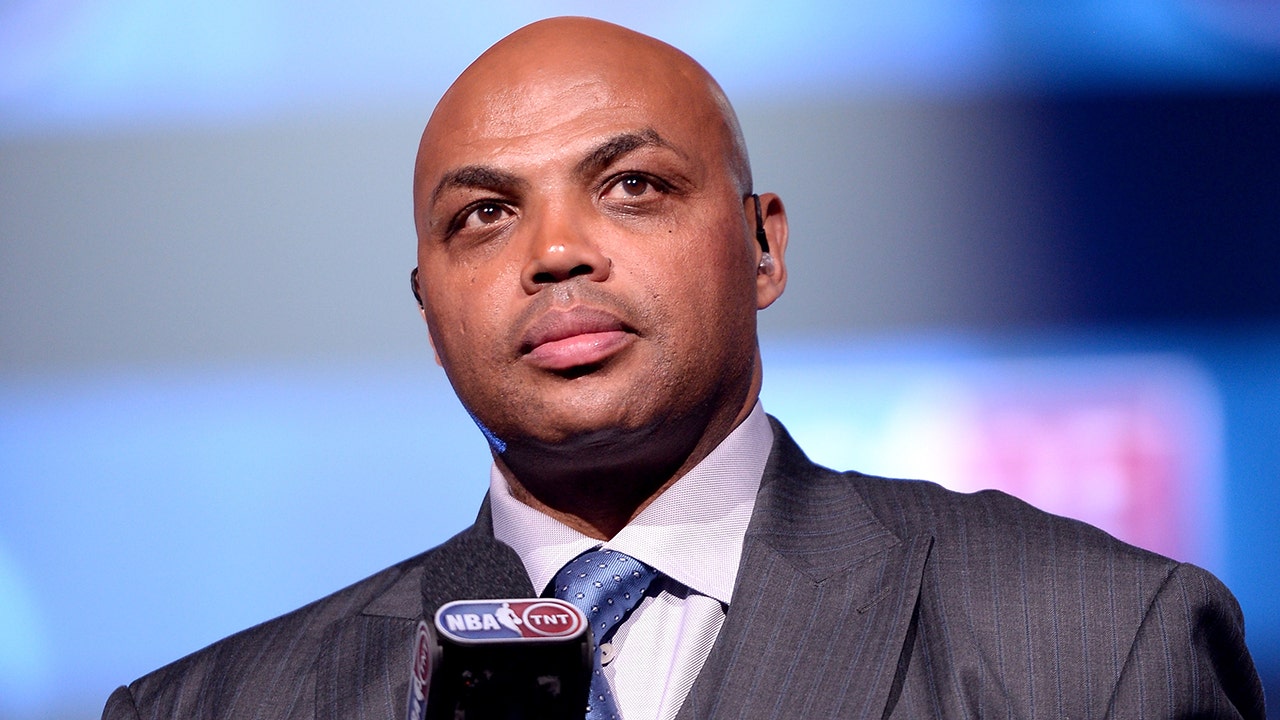
The NBA rejected a bid from Warner Bros. Discovery (WBD) to exercise its right to match an offer from Amazon for a part of the league’s 11-year, $76 billion media rights deal Wednesday.
Less than 48 hours after the announcement, WBD, TNT’s parent company, filed a lawsuit under seal in New York County Supreme Court.
Charles Barkley, the Hall of Famer and longtime co-host of TNT’s popular “Inside the NBA,” reacted to the company’s failed attempt to renew media rights.
“Clearly the NBA has wanted to break up with us from the beginning. I’m not sure TNT ever had a chance,” he wrote in a statement. In June, Barkley revealed his intention to retire at the conclusion of the 2024-25 NBA season. On Friday, he hinted he was open to other opportunities.
Charles Barkley speaks onstage Feb. 12, 2015, in New York City. (Stephen Lovekin/Getty Images for American Express)
“I have spoken to all three networks. … I have spoke to three networks,” Barkley said Friday during an appearance on the “Dan Patrick Show.”
When Patrick asked whether Barkley would follow through with his retirement plans since he was fielding calls from other media companies, the NBA legend said he was “going to listen” to what the networks had to say.
‘INSIDE THE NBA’ HOST CHARLES BARKLEY HINTS SPLIT WITH LEAGUE WAS INEVITABLE: ‘NOT SURE TNT EVER HAD A CHANCE’
“First of all, I’d be stupid not to take their call, but the beauty of this situation … I don’t have to make any decision for a year, Dan,” Barkley said. “But I told all three networks, ‘Hey I’m honored. I’m flattered that ya’ll want to talk to me, but let’s see what happens in a year.”
In May, the Sports Business Journal reported that Barkley has a clause in his contract that allows him to go elsewhere once the network’s NBA deal runs out.
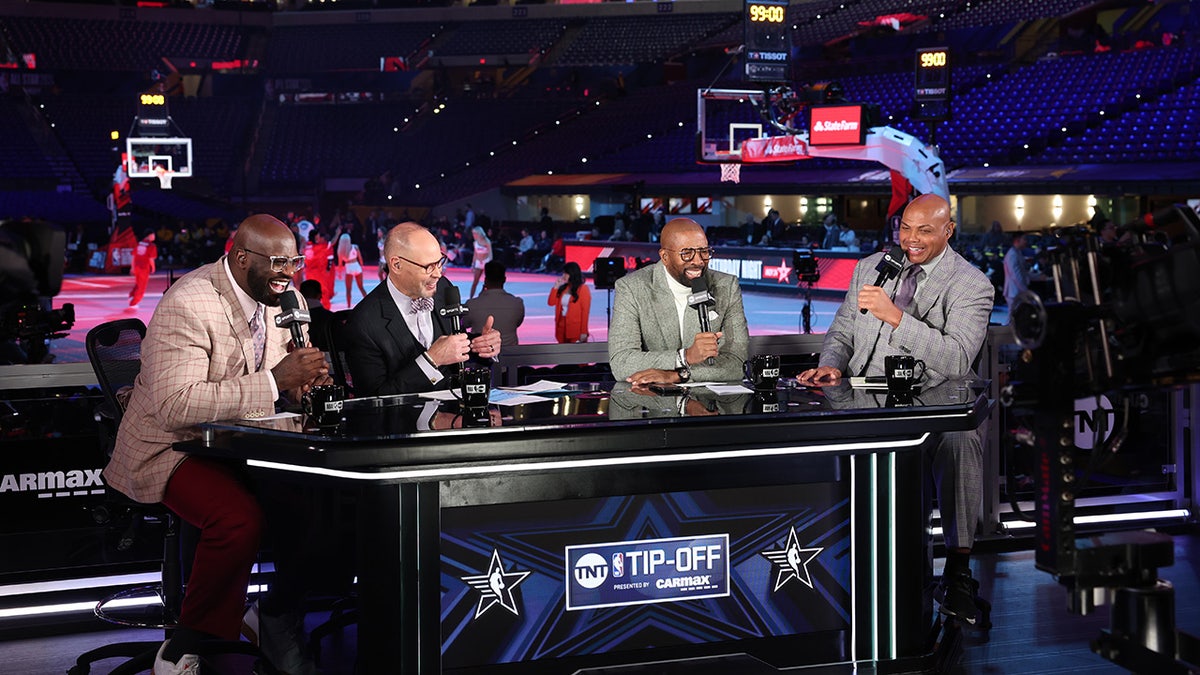
Shaquille O’Neal, Ernie Johnson, Kenny Smith and Charles Barkley from TNT talk Feb. 17, 2024, at Lucas Oil Stadium in Indianapolis. (Brandon Todd/NBAE via Getty Images)
Barkley confirmed the terms of his lucrative contract with TNT and revealed the deal is structured in a way that allows him to become a free agent once the 2024-25 NBA season ends.
“My deal is ten years, $210 million. Next year will be year three,” Barkley told Patrick. “Turner has to come to me today or next week and say, ‘Hey, we screwed up. Will you take a payout?’ So, they are going to have to guarantee the whole ten years, $210 (million), or they are going to have to ask me to take a pay cut, which, under no circumstances am I taking a pay cut. Zero chances of me taking a pay cut.”
He added that while he anticipates being a highly sought media personality next year, he also reaffirmed his intention to bring his broadcasting career to a close.
“But I don’t see them (TNT) guaranteeing it to be honest because they don’t really have anything. So, I think I’m going to be a free agent next summer. Right now, my intention is to retire.”
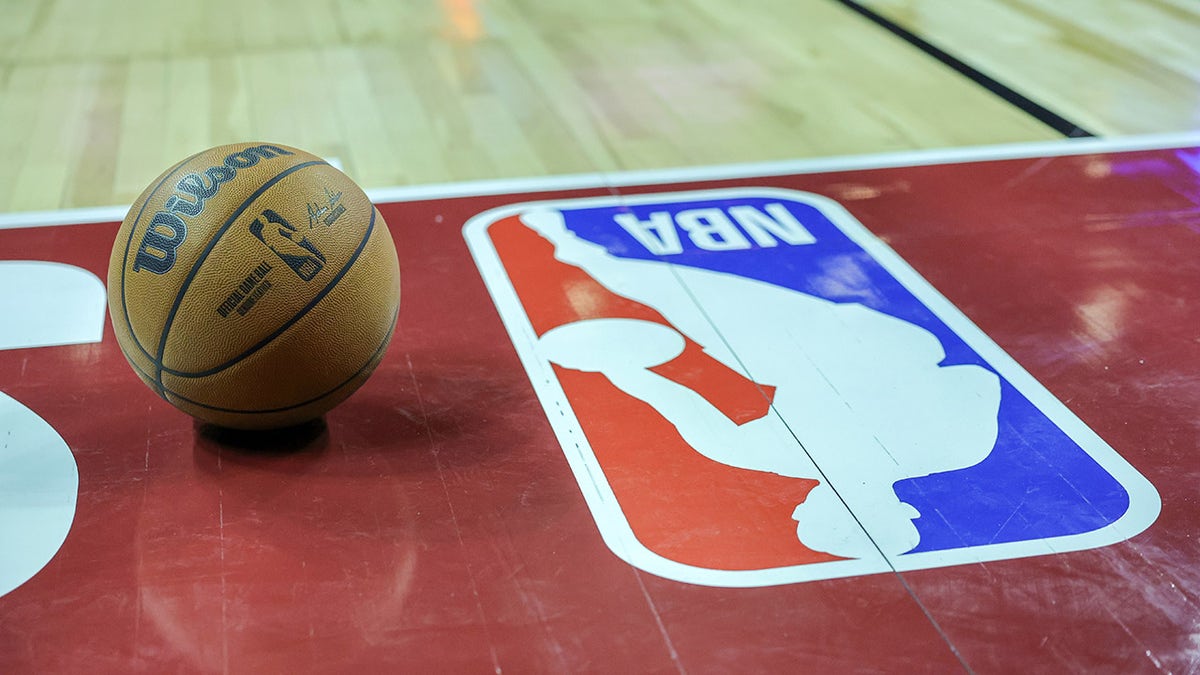
A basketball on the court next to an NBA logo during a break in the first half of a game in Las Vegas. (Ethan Miller/Getty Images)
The terms of the new media rights agreements maintain broadcasting rights for Disney’s ABC and ESPN platforms, while also marking the return of NBA games to NBC and the introduction of games to the company’s Peacock streaming service. Amazon Prime Video also picks up a package of games slated to begin after the 2024-25 season.
However, the lawsuit from WBD signals that the battle for the NBA’s broadcasting rights could ultimately play out in a courtroom. WBD released a statement explaining its decision to file the suit.
“Given the NBA’s unjustified rejection of our matching of a third-party offer, we have taken legal action to enforce our rights,” WBD said in a statement. “We strongly believe this is not just our contractual right, but also in the best interest of fans who want to keep watching our industry-leading NBA content with the choice and flexibility we offer them through our widely distributed WBD video-first distribution platforms – including TNT and Max.”
Follow Fox News Digital’s sports coverage on X, and subscribe to the Fox News Sports Huddle newsletter.
Sports
Angel City scores road win over Bay City in Summer Cup

Claire Emslie scored in the 54th minute to add to Angel City’s lead, and the defense held firm in a 2-0 road win over Bay FC in a group game of the NWSL x Liga MXF Summer Cup.
Angel City’s first goal came in the 18th minute when Dorian Bailey of Bay FC accidentally knocked the ball into her own net.
Angel City next faces San Diego Wave Thursday.
-

 World1 week ago
World1 week agoOne dead after car crashes into restaurant in Paris
-

 Midwest1 week ago
Midwest1 week agoMichigan rep posts video response to Stephen Colbert's joke about his RNC speech: 'Touché'
-

 News1 week ago
News1 week agoVideo: Young Republicans on Why Their Party Isn’t Reaching Gen Z (And What They Can Do About It)
-

 Movie Reviews1 week ago
Movie Reviews1 week agoMovie Review: A new generation drives into the storm in rousing ‘Twisters’
-

 Politics1 week ago
Politics1 week agoFox News Politics: The Call is Coming from Inside the House
-

 News1 week ago
News1 week agoVideo: J.D. Vance Accepts Vice-Presidential Nomination
-

 World1 week ago
World1 week agoTrump to take RNC stage for first speech since assassination attempt
-

 News1 week ago
News1 week agoRNC speakers want to separate the president from the person to show softer side of Trump
